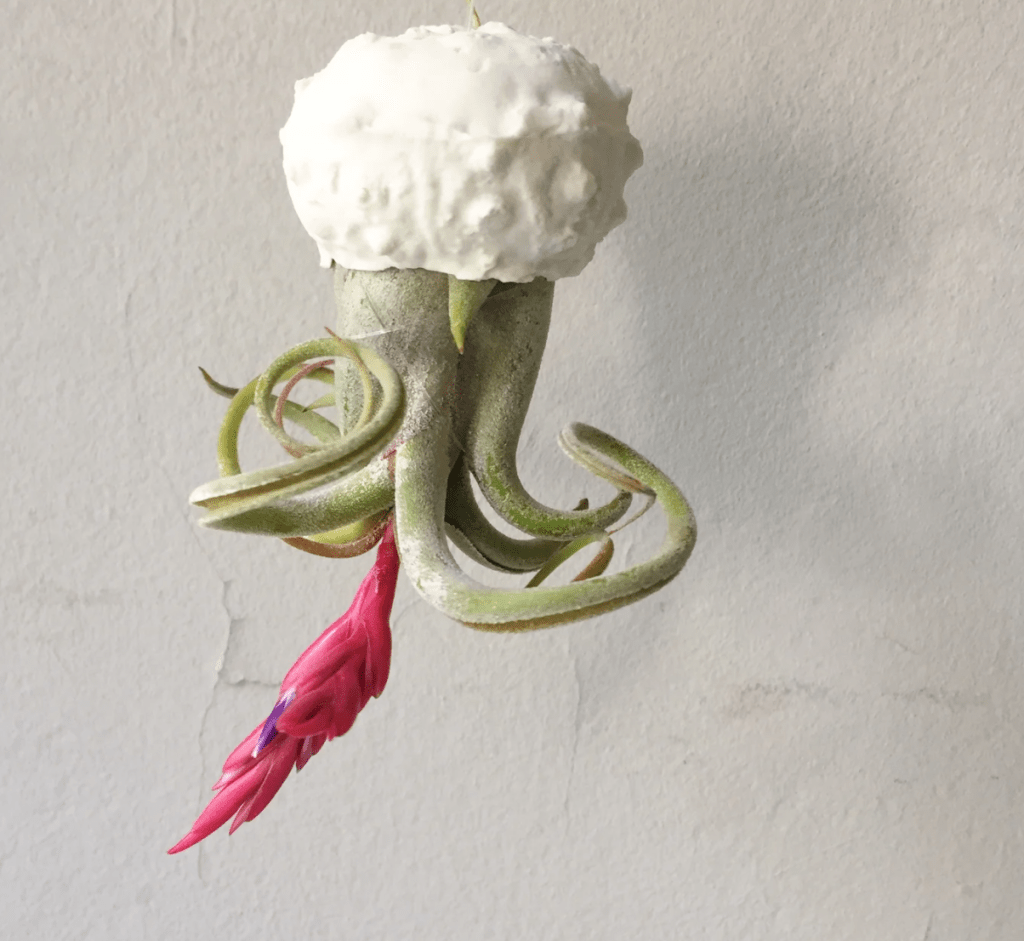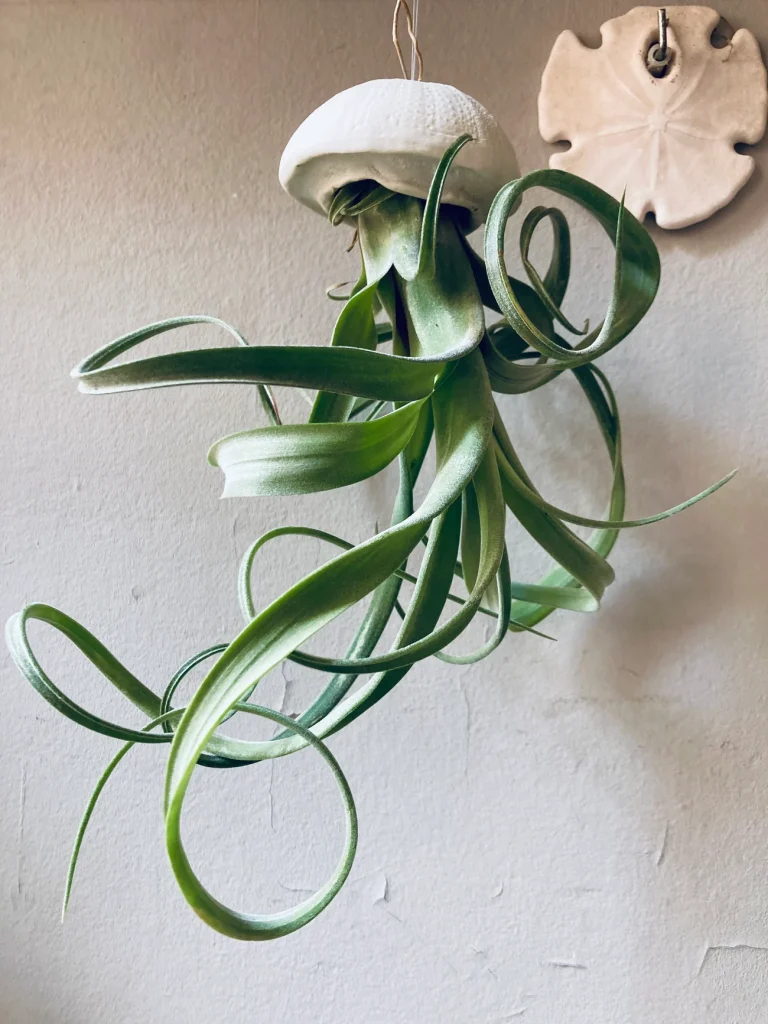Airplants, or tillandsias, are native to America and there you can find more than 600 species! Their principal characteristic is that they don’t need soil to survive and hang in trees or rocks.
No soil? Yes! Airplants have cells (trichomes) that absorb water from ambient humidity or rain.
We carry a variety of tillandsias from the rare and delicate to more common and easy to find ones. Visit our shop for more info.
If you are already a tillandsia collector, here’s a great website for Tillandsia classification from the Royal Botanics Gardens at Kew.
Tillandsia caput-medusae

One of our favorites that’s native to México! They have beautiful shapes that resemble an octopus. They are very easy to take care of, and a good choice for beginners. It was discovered in 1880.
Care: use misting or spraying to water this plant, no need for soaking.
Water: Mist 2-3 times a week during summer and focus on the head of the plant rather than the bulbous base. Shake well and make them dance to make sure dries completely.
If ever soaked don’t leave them in water for more than 10 minutes and shake them well.
During winter time, you can reduce the misting to once a week.
Light: Indirect. Some morning and evening sun but not direct.
Tip: If the leaves of the Medusa plant begin to curl, they are thirsty and need to be misted.
Tillandsia Xerographica

From South Mexico to Central America you can find this species in tropical and semi-arid areas. It’s been called the Queen of Tillandsias as its big size and harmonious shape make them stand out from others. They have silver-green curly leaves around the plant and their trichomes are quite visible.
Care: Very little need of water, less than other tillandsias.
You will only need to mist every other day during summer and once a week during winter.
If the humidity is too low, mist them more often.
Light: they can be placed in direct sunlight for most of the year without a problem. Just be careful not to expose them to too much direct sun during summer, as their leaves may start to wrinkle.
Tillandsia Butzii

From South Mexico to Central America where the tropical humidity helps them grow. Butzii has long, wiry, thin leaves that resemble tentacles. Their dark and light spots make them easy to identify. T. Butzii grows to 8 to 10 inches (20 to 25cm) and grows a bright purple flower when blooming.
Care: Where the climate is highly humid, mist them 3-5 times a week. Mist your Tillandsia Butzii until all the leaves are wet so that the trichomes are able to absorb the water.
Tip: We don´t recommend soaking Tillandsia Butzii as, because of their pseudo-bulbous nature, they can rot easily.
Tillandsia Curly Sim

This tillandsia is a hybrid (intermedia + streptophylla) with wide green and long curly leaves.
Care: Mist your plant 3 times per week, and soak it in water if you see the leaves get curlier than usual. Make them dance and shake off any excess water from the leaves of the air plant after soaking them.
Light: bright light and sun exposure is fine, as long it is not more than 4 hours in the hot summertime.
Tillandsia Pseudobaileyi

This tillandsia is from southern Mexico and Central America. Because their leaves are tubular and curved, you might think this is a sign of dryness but it is not. Also, colours are particular and might vary from green to almost purple.
Care: Mist your plant at least once per week, and make sure you take off excess water as bulbous species retain more water and are prone to rot. Make them dance and shake off any excess water from the leaves of the air plant after soaking them.
Light: Indirect light and little sun exposure, as long it is not more than 4 hours in the hot summertime.
